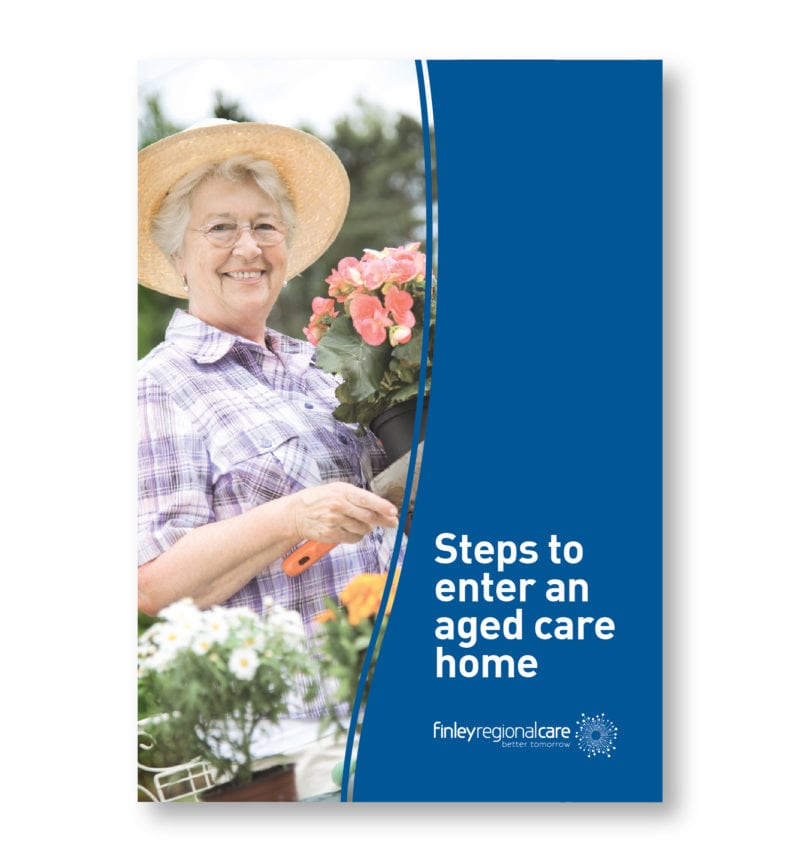Once known as nursing homes, today’s aged care homes provide residential accommodation and health care for older people who are unable to remain living in their own homes any longer.
Aged care services in Australia can be delivered by government providers, not-for-profit and for-profit providers. Most aged care homes in Australia are funded by the Federal Government to subsidise the costs of the aged care services they provide. All must have the approval of the Australian Government to provide these services, and must meet certain accreditation standards.
There is a process to be followed before an elderly person can be accepted as a resident in an aged care home.
Step 1: The process of assessment
Initial Call
In order to be assessed for your eligibility for care in an aged care home, you will need to call My Aged Care on 1800 200 422. During the call My Aged Care staff will question you about your current circumstances and needs so that you can be referred for a free assessment if your care needs show that you might be eligible for care in an aged care home.
The Assessment
A member of your local Aged Care Assessment Team (ACAT) or the Aged Care Assessment Service (ACAS) if you live in Victoria, will assess you in your home by talking to you about your current situation. Talk to this specially trained assessor honestly about your circumstances and any concerns you may have. You are welcome to have a family member, friend or carer with you for this assessment to make you feel more comfortable or to help you remember important points.
The assessment outcome
Your assessor will make a formal decision about your care needs and level of care required after the assessment is complete.
If you are assessed as being eligible for entry into an aged care facility
You can expect to receive a letter of approval and a support plan from your ACAT service that outlines the care you have been approved to receive, and a unique referral code that you give to your chosen aged care provider when you enter their care. Keep in mind that all decisions about entering an aged care home can only be made with your agreement.
If you are not approved for entry into an aged care facility
You will also receive a letter outlining the reasons why you were not approved, and providing details of who to contact for more help. If you are eligible for other care and services, this information will be provided in this letter to give you a clear path moving forwards.
Step 2: Costs and funding
Aged care homes are subsidised by the Australian Government, to ensure aged care is affordable for all Australians – around $65,000 each year for each permanent aged care home resident. This amount increases each year. Subsidies based on your care needs are paid directly to the home. If you are eligible, you are expected to contribute to the cost of your care and accommodation if you can afford to do so.
To get an estimate of your likely fees, call My Aged Care on 1800 200 422 or use the aged care homes Fee Estimator.
Costs you may need to pay
Fees are payable for every day you are in your aged care home, and are generally paid fortnightly or monthly. They may include:
- A basic, daily fee that covers living costs including power, meals and laundry. For some people, this is the only fee they need to pay.
- Means-tested care fee– if you have income and assets over a certain amount, you can be asked by the Department of Human Services (DHS) to contribute an amount based on your income and assets assessment towards the cost of your care.
- Accommodation costs for your accommodation in the home. The Australian Government may pay these costs in full or in part for some people, while others will need to pay the price agreed with the aged care home. Your income and assets assessment will determine which costing model applies to you.
- Fees for extra services – such as if you choose a higher standard of accommodation or additional services above your assessed care needs or the care and services your aged care home must provide. Your care needs will be assessed within four weeks of you moving into an aged care home using a tool called the Aged Care Funding Instrument (ACFI). This will help you to understand what care and services the home can and cannot charge you for. The fees may vary from home to home.
Your financial assessment
To determine your eligibility for government assistance and whether you need to pay a means-tested care fee, you will need to undergo an income and assets assessment. This process takes time, so arrange this assessment with DHS as soon as possible. Eligible members of the veteran community may have their assessment undertaken by DVA.
To apply for your income and assets assessment, you need to complete the Permanent Residential Aged Care Request for a Combined Assets and Income Assessment(SA457) form. This is available from DHS by calling 1800 227 475 or downloading a copy from the website. Once you have submitted this form, it will take at least two weeks to receive information about your fees. If you haven’t received information by this time, contact DHS on 1800 227 475 or DVA on 1800 555 254. The advice contained in this letter will be valid for 120 days, and you should take this letter with you to any discussions you have with potential aged care homes. If there is a change in your circumstances, your fee advice letter will need to be reissued by DHS or DVA after you have notified them about this change.
You won’t be eligible for government assistance unless you complete this assessment, and may have to pay the maximum means-tested care fee and an accommodation payment (up to their maximum published room price).
Once you have moved into your aged care home, DHS will send you a letter outlining the maximum fees you may be asked to pay, including the basic daily fee, the means-tested care fee and the accommodation contribution, if applicable.
Accommodation Costs
There are three options, and DHS will advise which applies to you:
- No accommodation costs if your income and assets are below a certain amount, as the Australian Government will pay these costs.
- An accommodation contribution, where you pay for part of your accommodation costs and the Australian Government pays the rest
- An accommodation payment, where you pay the full cost for your accommodation
Step 3: The application process
Once you’ve decided which aged care home you’d like to move to (click here to discover how to choose an aged care facility that’s right for you), you can start the process of applying for a place. Keep in mind that it’s wise to apply to a number of homes, as your first choice of home may not have a place available when you need it, so make a shortlist of providers to apply for where you would be happy to live. Follow each provider’s application process, which will usually involve filling in forms and providing certain information such as your unique referral code. This will allow the provider to view your records and make plans to cater for your individual care needs.
When a place becomes available, the relevant aged care facility will notify you or a nominated contact person. Once you have accepted the offer, the facility will provide you with formal agreements to be signed, covering your rights and responsibilities, services provided and agreed costs.
Step 4: Formal agreements
After you have accepted a place in an aged care facility, you must first sign a legally binding resident agreement and accommodation agreement. These document:
- what fees you will need to pay
- how fees can be paid
- the care and services provided
- your rights and responsibilities
If you have any questions about these agreements, ask your aged care home for clarification, as it’s important that you understand everything these agreements cover before signing them.
Although it is best to sign the agreements as soon as possible, there is no time limit on this process, so you are free to take as long as you need to understand the agreements thoroughly.
You can choose not to sign the agreements (although it is in your best interests to do so), and if so, you will need to have a discussion with the aged care provider about your needs, the care and services provided and what fees will apply. You will still need to pay your fees and accommodation costs when you move in, however.
To read more about your choices concerning aged care in Australia, click here.


 Farewell, Tanya!
Farewell, Tanya!
